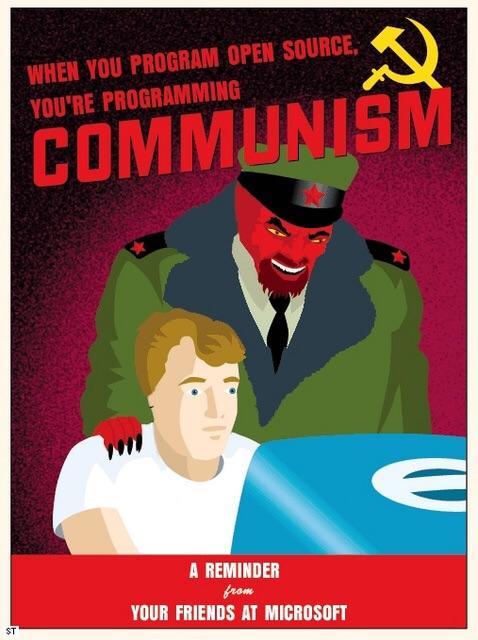

My dude, the person isn’t being called fat 😊, though reading the article that way makes it kinda morbidly hilarious.
The type of cells are adipose cells, which are also called fat cells, because they store fat in them.


My dude, the person isn’t being called fat 😊, though reading the article that way makes it kinda morbidly hilarious.
The type of cells are adipose cells, which are also called fat cells, because they store fat in them.


I think Huawei’s talking about their new triple-folding phone, the Mate XT. The phone unfolds like a z-fold brochure from a regular phone into an iPad.
This triple folding finally lets folding phones match real tablet sizes, which might make them finally an attractive option for consumers who want to merge their phone and iPad into one.


This event is quite a blatant attempt by NATO to pressure Telegram into giving them a backdoor, which is a good sign that they didn’t have access previously.
One must ask why Signal, Matrix/Element, Session, and Tor haven’t faced such attacks despite being based in Western countries.
For example, Tor is developed by the US government to protect their spies, and was opened to the public to shield spy web traffic.
Are there any true anti-imperialist alternatives? For instance, Wechat is made in China, but doesn’t have any mechanisms to protect user info.


Oh, just an annoying marketing stunt. Capitalism distracts me once again.


I’m swapping to a brand new Samsung in a couple months. I need the S Pen for school. I don’t think an alternate privatevOS exists for it 😭.


Shiiiit. My mobile is in the vulnerable demographic. Time to see if Google will patch this out.


This is awesome! I’ve heard liberals talk about China’s sand usage as part of their China-bad smearing without offering any solutions. Artificial sand from mine tailings (a waste product) has basically no downsides, since those tailings would be produced regardless.


Yes, this is why the “stop China’s military devwlopment” excuse is bullshit. Missiles and drones don’t use NVIDIA H100s, they use dedicated chips made on older nodes for durability.

Because of Japanese capitalism, the average Japanese worker (and probably most Western workers also) is incredibly atomized. High school and maybe college are the last times that people get to socially interact with lots of other people without the pressure of money ruining everything.
Thus, high school ends up being the idealized environment for all of the slice of life / romantic anime and games, where authors want characters to have enough free time to fall in love and have friends while not worrying about finances or becoming homeless.
To me, a happy relationship forming between co-workers feels a lot less likely than a happy relationship forming between students, because working adults will always calculate some part of the relationship based off financial gain. Students simply don’t consider that at all.


Yes. All LEO satellites have rather limited lifespans. They orbit at lower altitudes to reduce connection latency. This also means that they still feel some amount of atmospheric drag from the upper remnants of the atmosphere, so slow down over time.
This is huge. Having another option for global internet connectivity that isn’t dependent on the US Empire is going to be amazing for the global south.


Fnally, my anime knowledge is coming in handy.
Crunchyroll is like Netflix, but dedicated to anime. They used to compete with Funimation, a rival anime streaming service owned by Sony, but then Sony bought Crunchyroll also and merged the two under the Crunchyroll name. Together, they now own 90%+ of the Western anime streaming market. Predictably, Crunchyroll’s prices have ticked steadily upward since.
Not only does this hurt consumers, it also harms animators and voice actors. Because there’s no competition, Crunchyroll can lowball animation studios, which is one reason why Japanese animators are so overworked and underpaid. Similarly, Crunchyroll despises all unions, and since they’re the only game in town, most voice actors are forced to go unionless and accept shittier pay. This keeps unions in the animation industry perpetually weak.
The only things stopping Crunchyroll from becoming a full monopoly is the well-developed pirating industry around anime. Netflix, Disney Plus, and HIDIVE are technically competitors also, but each have glaring issues. Netflix is even more shit, Disney Plus buries anime in their catalog so you can’t find them, and HIDIVE is too small to be worth paying for.


This pivot against FOSS in the West will just hurt themselves. The strength of FOSS is its huge potential for reach, while its drawback is that it’s harder for FOSS devs to make a living.
In the West, FOSS devs all live on donations. While a few FOSS programs become huge enough to sustain themselves, most fail. Western governments have deliberate policies of not finding much FOSS development, exacerbating this issue.
Socialist countries’ (e.g. China’s) policies of government investment in development invariably leads to more investment in FOSS, providing FOSS developers more stable incomes. For example, China has multiple government-funded Linux OSes (UOS, Kylin, Deepin), OpenHarmony OS, etc.
This will ultimately snowball into more and more FOSS programs, creating a vibrant socialist-developed software ecosystem the developing world can quickly plug into at low-cost.


This is technically true. China currently only has DUV machines, which don’t have enough resolution to produce 5nm chips directly. Only more advanced EUV machines are able to produce this directly or in one-two patterning steps.
However, China can still produce 5nm chips via multiple patterning. Basically, by overlaying lower resolution patterns offset from one another, you can form higher resolution structures in between the lower-res patterns. By repeating the multi-patterning process, you can “technically” get infinitely small resolutions.
The drawback is that you have to use several more steps. Each step takes more time, reducing throughout, and is a possible area for error. As a result, multi-patterned yields are lower than directly produced yields, and are more expensive as a result.
Thus, the real benefit going from DUV to EUV is reduced costs and increased throughput. Until China gets EUV, multi-patterned DUV is sufficient, since the state is willing to accept higher costs of production and provide subsidies to chipmakers in exchange for self-reliance.
The stumbling block right now is that the tech jump from DUV to EUV is large. DUV (deep ultraviolet light), which has a wavelength around 250nm, can be produced directly via lasers.
On the other hand, EUV (extreme ultraviolet light), which has a wavelength of 13.5nm and is almost an X-ray, cannot currently be produced directly right now. Current machines make it by using a giant laser to zap a molten drop of tin, turning it into a plasma which emits the desired EUV light. In the process, only ~6% of the original laser power is converted to EUV, resulting in an output of around 350 watts.
All in all, it took ~20 years to master this convoluted process. It will take China time to develop this EUV production tech, probably around 5-10 years at most.
In the process, China might be able to leapfrog some lingering issues with the tech. For example, the dogshit conversion efficiency means that a ridiculously large starting laser is needed to produce a paltry amount of EUV light, with the process output capping out around 500 watts.
Instead, China is starting work on oscillating electrons in a particle accelerator to generate EUV light directly, with much higher power output, called steady-state micro-bunching (SSMB). Using SSMB, China can use one accelerator to power dozens of EUV machines, and can scale output to be superior than current EUV machines. China is beginning work on a facility dedicated to SSMB research in Xiong’an this year.
For more info on this stuff, see:
Good point. I’ve been dabbling with Khoj myself, which connects with Obsidian, the Markdown notemaking software I use. This lets the AI draw from my notes on the fly.
I’m waiting to build a PC with the RTX 5090 or something before diving deeper into local AI. The integrated GPU I’m using right now is just too slow.


The test tracks used for launch testing are the same ones cited as “for hyperloop testing” here (notice that the track mentioned in both is built by CASIC in Datong, Shanxi, is 2 km long, and is inside a low-vacuum tube). Space launch is a much more logical use for this kind of technology than rail transport. It’s nice to see that the same equipment can be used for research in such different fields.
This does mean that this track technically isn’t a “railgun”, as it uses magnetic levitation and not the Lorentz force for propulsion.
This isn’t really a significant player in the space yet. This field of local LLM frontends is extremely active right now, with many new projects popping up and user counts shifting around. Here’s a good article that reviews the most prominent ones right now, with rankings for different uses: https://matilabs.ai/2024/02/07/run-llms-locally/
TLDR from the article:
Having tried all of these tools, I find they are trying to solve for a few different problems. So, depending on what you are looking to do, here are my conclusions:


Next, let me sum up how to pull off this scam. First, buy a couple of commercial dehumidifiers. Next, put the equipment inside them into new, cool-looking equipment boxes. Third, call news stations saying you’ve solved water forever.


This tech is just a reskinned dehumidifier. The scientist Youtuber Thunderf00t has made a number of videos debunking these types of claims. Their issues can be summed up as the following:


This is great progress! IDK if they should take the Apple closed ecosystem route or eventually go open source and compete with Android.
My bad, wooshed 😅.